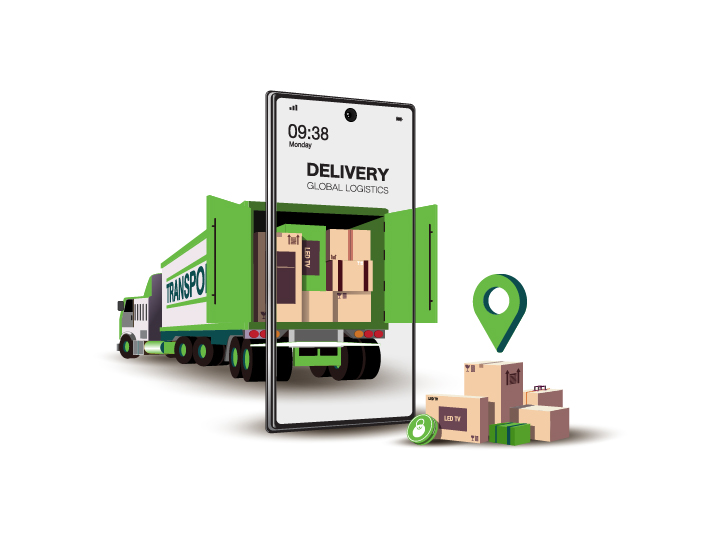Best Practices for Fulfilling Orders Efficiently and Accurately for Omnichannel Brands

In today’s competitive retail landscape, order fulfillment plays a pivotal role in shaping the overall customer experience. Efficient and accurate e-commerce fulfillment can significantly enhance customer satisfaction, boost loyalty, and drive repeat business. With consumers increasingly dividing their shopping journeys across multiple online and offline channels, including in-store browsing, omnichannel brands must prioritize optimizing their fulfillment processes. As the less time businesses spend picking and packing orders and dealing with delays, the quicker they can meet customer demands and improve their overall service quality.
This blog introduces best practices designed to enhance efficiency and accuracy in e-commerce fulfillment for omnichannel brands.

Efficient fulfillment drives customer satisfaction and loyalty in retail
Understanding Omnichannel Fulfillment
Omnichannel order management is the process of using a single order management system (OMS) to holistically manage customer orders across all touchpoints and channels. An omnichannel OMS uses real-time inventory data combined with capturing orders and facilitating the omnichannel fulfillment process across online and offline e-commerce channels.
This channel uses a strategy that allows consumers to purchase products from multiple channels. These include online retail websites, mobile apps, specialized marketplaces, social campaigns, and more. All sales channels are integrated with a single inventory storage system to fulfill and deliver every order efficiently.
The main purpose behind omnichannel retail strategy is to create a pleasant shopping experience for customers and provide them with convenient access to the products. The goal is to ensure that customers receive the correct products on time, in good condition, and with accurate documentation.
For omnichannel brands, the efficiency and accuracy of order fulfillment directly impact customer satisfaction and brand reputation. Efficient e-commerce fulfillment ensures that orders are processed and delivered quickly, meeting the increasingly high expectations of today’s consumers. Accurate fulfillment reduces errors, minimizing returns and exchanges, which can be costly and damaging to customer trust. Together, these elements enhance the overall customer experience, fostering loyalty and encouraging repeat purchases.

Streamlined, unified fulfillment enhances customer experience across all channels.
Common Challenges Faced in Omnichannel Fulfillment
The complexities of multi-brand order processing and management present many challenges that require strategic solutions. About 10-20% of retail sales are omnichannel and most retail businesses face similar e-commerce fulfillment challenges. From brand-specific workflows to meeting customer expectations and ensuring a seamless brand experience, the journey towards efficient multi-brand operations is intricate yet crucial for business success.
Here’s a closer look at the challenges unique to multi-brand order management operations:
- Inventory Management: Synchronizing inventory across multiple channels in real-time to prevent stockouts and overselling.
- Logistics Coordination: Managing the complexity of shipping and delivery options, such as same-day delivery, buy online, pick up in-store (BOPIS), and ship-from-store.
- Technology Integration: Implementing and maintaining systems that integrate seamlessly across all channels, including OMS, WMS, and CRM tools.
- Data Consistency: Ensuring accurate and up-to-date information across all channels to provide a consistent customer experience.
- Customer Expectations: Meeting high expectations for fast and flexible delivery options while maintaining accuracy and efficiency.
- Returns Management: Handling returns efficiently to maintain customer satisfaction and control costs.

Centralized Inventory Management
- Unified Inventory System: A unified inventory system is critical for omnichannel brands to maintain a single view of inventory across all sales channels. This approach ensures that inventory data from physical stores, warehouses, and online platforms are consolidated into one central system. This visibility helps prevent stockouts and overstock situations by providing accurate inventory levels.
- Real-time Inventory Updates: Keeping inventory data current in real-time is essential for efficient and accurate e-commerce fulfillment. Regular synchronization between the centralized system and individual offline and online sales channels ensures that inventory levels are updated as transactions occur. An OMS is a key component for performing this step accurately and in real-time.
- Inventory Optimization: Optimizing inventory involves strategically balancing stock across various locations to meet demand while minimizing carrying costs. Techniques such as demand forecasting, just-in-time (JIT) inventory, and ABC analysis can help identify and prioritize stock levels for high-demand products.
- Centralize Inventory Visibility: Centralizing inventory visibility means consolidating all inventory data into a single, accessible platform. This approach enables omnichannel brands to have a comprehensive view of their stock, facilitating better coordination and resource allocation. Centralized visibility also supports better reporting and analytics, allowing brands to identify trends and make informed decisions.

Ginesys streamlines customer orders across channels for seamless fulfillment.
Advanced Order Management Systems (OMS)
- Automation: Automation in OMS can significantly enhance efficiency and accuracy in fulfilling orders. Automated processes such as order routing, inventory allocation, and shipping label generation reduce manual intervention, speeding up the omnichannel fulfillment process.
- Integration: For an OMS to be effective, it must seamlessly integrate with other critical systems like ERP, WMS, CRM, and other sales channels. This integration ensures smooth data flow between systems, providing a unified view of orders, inventory, and customer information. Integrated systems help maintain data consistency and improve order accuracy.
- Configure Order Consolidation and Batch Processing: Order consolidation involves combining multiple orders for the same customer or destination into a single shipment, reducing shipping costs and improving efficiency. Batch processing allows for handling multiple orders simultaneously, optimizing picking, packing, and shipping activities.
Warehouse Management Best Practices
- Layout Optimization: Effective warehouse layout optimization is crucial for efficient order fulfillment. During the planning phase, it is essential to consider all business requirements to prevent costly changes during facility construction.
- Single-Order Picking vs. Batch Picking vs. Zone Picking: Choosing the right picking strategy is essential for efficient e-commerce fulfillment. Single order picking involves selecting items for one order at a time, which is simple but can be time-consuming. Batch picking groups multiple orders together, increasing efficiency. Zone picking divides the warehouse into zones, with each picker responsible for a specific area.
- Pick to ship automation: Preferably your ecommerce OMS should be fully automated and should keep guiding you to the next step in the order fulfilment process. It can suggest couriers or delivery partners, identify picking locations, pre-fix marketplace or webstore appropriate labels.
- Technology Utilization: Integrating advanced technologies like barcoding, RFID, and OMS systems can significantly enhance warehouse management. These tools can simplify sales and order fulfillment procedures, minimize mistakes, and offer valuable operational data.
Leveraging Technology for Fulfillment
- Robotics and Automation: Robotics and automation play a pivotal role in modern fulfillment centers. Automated guided vehicles (AGVs) and autonomous mobile robots (AMRs) can transport goods within the warehouse, reducing manual labor and speeding up operations. Robotic and automated sorting systems handle repetitive tasks with high precision and speed.
- AI and Machine Learning: AI and ML are transforming inventory management and demand forecasting. Predictive analytics powered by AI and ML in omnichannel retail analyze historical data, market trends, and other variables to forecast demand accurately. This helps in maintaining optimal inventory levels and reducing stockouts and overstock situations.
- Mobile Solutions: Mobile devices are essential tools for omnichannel order fulfillment in retail. Equipping staff with handheld devices or tablets allows real-time access to inventory data, order information, and task assignments. Mobile solutions enable seamless communication, quick problem resolution, and efficient task management.
- Prioritize Scalability and Flexibility in Tech Stack: As the omnichannel brand grows, scalability and flexibility in the tech stack become crucial. Invest in scalable software solutions that can adapt to increasing order volumes and expanding operations. Prioritize technologies that can be customized to the specific needs of brands and easily upgraded as the business evolves.
Streamlining Shipping and Logistics
- Streamlined Order Picking: In any given distribution center, order picking can account for up to 55 percent of operating costs. Streamlined order picking boosts the speed and accuracy of getting products from the warehouse into the hands of the end consumer.
- Carrier Management: Selecting the right carrier partnerships is essential for meeting delivery expectations and controlling shipping costs in the omnichannel fulfillment process. Evaluate carriers based on their reliability, shipping rates, delivery times, and coverage areas. Establishing strong relationships with multiple carriers allows for flexibility, supply chain optimization and better rate negotiations.
- Shipping Software: Investing in robust shipping software can significantly streamline the logistics process. Such software enables comparison between shipping rates across different carriers, prints shipping labels, and tracks shipments in real time. Integrate the shipping software with OMS and WMS to ensure seamless operations.
- Packaging Optimization: Optimizing packaging is crucial for reducing shipping costs and ensuring product safety. Use packaging materials that are the right size and weight to avoid unnecessary shipping expenses. Implementing packaging guidelines to standardize the packing process and investing in packaging automation can further enhance efficiency and consistency.
Returns Management
- Efficient Returns Process: A well-designed returns process is vital for maintaining customer satisfaction and controlling costs in the omnichannel fulfillment process. Simplify the returns process by providing clear instructions and offer multiple return options to enhance convenience. Regularly analyze return data to identify patterns and address root causes, such as product quality issues.
- Reverse Logistics: Efficiently managing reverse logistics involves handling returned goods promptly and effectively. Develop a streamlined process for inspecting, refurbishing, and restocking returned items. Consider using specialized software to track returns and manage reverse logistics operations.
- Customer Communication: Transparent and proactive communication is key to a positive returns experience in the omnichannel fulfillment strategy. Keep customers informed about the status of their returns through automated email or SMS updates. Provide detailed information about the returns policy on the website and ensure customer service teams are well-versed in handling returns inquiries.
- Utilizing Technology for Order Tracking: Leverage technology to provide real-time order tracking, supply chain optimization and enhance visibility into the returns process. Implement systems that allow customers to track the status of their returns from initiation to resolution. Use data analytics to monitor return trends and improve entire processes.

Streamlining omnichannel fulfillment: From order to doorstep success
Cross-Channel Coordination
- Consistent Experience: For omnichannel brands, providing a seamless and consistent customer experience across all channels is crucial. Customers should feel a sense of continuity whether they are shopping online, in-store, or through a mobile app.
- Communication and Collaboration: Effective communication and collaboration between online and offline teams are essential for smooth e-commerce fulfillment. Use centralized communication platforms to keep all teams informed about updates. Hold regular cross-departmental meetings to discuss challenges, share insights, and align strategies.
- Maintain Real-Time Order Visibility: Real-time order visibility is essential for efficient and accurate order fulfillment. It ensures that all teams are aware of the status of orders at any given time, helping to prevent delays and errors.
Monitoring and Continuous Improvement
Continuous monitoring is crucial for enhancing omnichannel brands' performance. Here are some ways businesses can achieve this:
Key Metrics: Important KPIs to Track in Order Fulfillment
Tracking key performance indicators (KPIs) is critical for monitoring the efficiency and accuracy of the omnichannel fulfillment process. Important KPIs include:
- Order Accuracy Rate: The percentage of orders fulfilled without errors.
- Order Cycle Time: The average time taken from order placement to delivery.
- Inventory Turnover: How often inventory is sold and replaced over a period.
- Fulfillment Cost per Order: The total cost of fulfilling an order, including labor, packaging, and shipping.
- Customer Satisfaction Score: Measures customer satisfaction with the order fulfillment process.
Customer Feedback: Using Customer Feedback to Improve Processes
Customer feedback is a valuable resource for identifying areas of improvement in e-commerce fulfillment. Here’s how to effectively use it:
- Surveys and Reviews: Regularly collect feedback through surveys, reviews, and ratings.
- Analyze Feedback: Analyze feedback to identify common issues and trends.
- Implement Changes: Use insights from feedback to implement changes and improvements in processes.
- Close the Loop: Communicate back to customers about the changes made based on their feedback to build trust and loyalty.
Regular Audits: Conducting Regular Audits to Identify and Address Inefficiencies
Regular audits are essential for identifying inefficiencies and ensuring that processes remain effective. Conduct audits by:
- Internal Audits: Regularly review internal processes, systems, and workflows to identify areas for improvement.
- Third-Party Audits: Consider using third-party auditors to gain an unbiased perspective on the omnichannel fulfillment process.
- Compliance Checks: Ensure compliance with industry standards and regulations.
- Actionable Insights: Use audit findings to develop actionable plans for addressing inefficiencies and improving processes.
Continuous Data Analysis and Optimization
Continuous data analysis allows for ongoing optimization of the order fulfillment process. Implementing this involves:
- Data Collection: Collect data on all aspects of the omnichannel fulfillment process, from order entry to delivery.
- Data Analysis Tools: Use advanced data analysis tools and software to analyze data and identify patterns.
- Process Improvements: Regularly review analysis results to identify opportunities for process improvements.
- Iterative Optimization: Implement changes and continuously monitor their impact, making further adjustments as necessary to optimize efficiency and accuracy.

How Ginesys One Turns the Omnichannel Fulfillment into a Revenue Driver
While many companies can undertake omnichannel order fulfillment on their own, there are several e-commerce businesses without the resources and means to carry out this process. A single 3PL can handle all businesses' fulfillment needs in one place, so they won’t have to worry about extra costs or labor. Even established companies can benefit from outsourcing to a dedicated omnichannel fulfillment service that provides inventory management, packaging, and shipping of goods.
For omnichannel brands, Ginesys can streamline operations and enhance overall efficiency. Ginesys, with its specialized capabilities and technology-driven solutions, offers a seamless integration of inventory, orders, and delivery processes.
Benefits of Using Ginesys One for Omnichannel Order Fulfillment:
- Higher Growth for E-Commerce: Ginesys provides robust technology and advanced analytics to support the dynamic demands of e-commerce. By leveraging Ginesys One, brands can scale operations quickly and efficiently, meeting the demands of peak seasons and promotional periods without compromising on service quality.
- Better Inventory Logistics: Efficient inventory management is crucial for omnichannel success. Ginesys employs state-of-the-art inventory tracking systems that provide real-time visibility and control. This ensures optimal stock levels across all channels, minimizing stockouts and overstock situations, and ultimately leading to better customer satisfaction.

Ginesys: Empowering omnichannel success with seamless fulfillment solutions
In an omnichannel world, streamlined retail fulfillment operations are key for seamlessly meeting customer expectations across various channels. By evaluating and implementing these best practices, brands can improve their operational efficiency, enhance customer satisfaction, and drive revenue growth.
Embracing the comprehensive solutions offered by Ginesys can transform omnichannel order fulfillment into a powerful revenue driver, positioning the brand for sustained success.
Reach out to the Ginesys team today to elevate your retail fulfillment to the next level.





